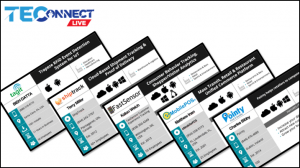Estimated reading time: 5 minutes
2020 was tough for everyone. Too many Americans lost family members to the unforgivable virus and were forced to limit their in-person interactions, and yes that means funerals and weddings. Businesses are received the blunt-end of the stick as they struggled to stop the spread of the virus Back in Q1 and Q2 of the year, many parts of the country were placed in mandatory lockdowns and quarantines in an attempt to slow and eventually halt the spread of COVID-19. Ensuring that the cities of this nation will open up to a sense of normalcy and remain a livable and sustainable environment has become quite the challenge, especially cycling down the supply chain. 
Supply chains are moving away from the more traditional linear structures to more option, network-driven systems, and with that said, those networks require a brand-new idea of communicative and logistics infrastructure that allows different assets in the supply chain to operate interdependently. Deloitte paints a picture of how technology is ‘revolutionizing’ supply chain management through lower transaction costs, a spike in innovative production rates, and the emergence of digital supply networks. With technology outlets constantly improving as time goes on, it’s evident supply chains will become increasingly more digitized and user friendly from now on.
Keeping Everyone Safe
In many industries we saw a complete 180 in strategies to keep operations smoothly flowing, for example if you look at the retail environments, you’ll remember how many people, and maybe even yourself, felt reluctant to shop in-store, in-person at physical brick and mortar stores, so the alternative was Curbside Pickup and Buy-Online-Pickup-In-Store (BOPIS) to keep operational spirits up and bright. Many warehouses and shipping companies were caught off-guard by the magnitude of the virus and how terribly it affected many businesses and they found themselves scrambling to locate solutions and fixes to allot themselves better supply chain visibility and connectivity.
 Many employees have been forced to send their employees home, so they can work from their remote offices, but for warehouse employees, that’s not entirely achievable. Their typical shift involves manual labor that can’t be processed from a remote location, so in order to combat that, employers are implementing proximity-based software to ensure that their employees are staying socially distant and safe while on the clock. Managers and shift leads can then follow up with the necessary disinfecting and cleaning protocols that would help to slow the spread and keep everyone involved safe.
Many employees have been forced to send their employees home, so they can work from their remote offices, but for warehouse employees, that’s not entirely achievable. Their typical shift involves manual labor that can’t be processed from a remote location, so in order to combat that, employers are implementing proximity-based software to ensure that their employees are staying socially distant and safe while on the clock. Managers and shift leads can then follow up with the necessary disinfecting and cleaning protocols that would help to slow the spread and keep everyone involved safe.
Maximizing Mobility on the Road
Shipping and logistics companies are still sending their delivery drivers out on the open road on their routes to deliver goods from business to business, business to consumer, and so on and so forth; that much hasn’t changed, but businesses are still working to monitor their drivers’ whereabouts from Point A to Point B. Ensuring that there is a clearer sense of visibility throughout the entire trip is essential in protecting employees to know that their final destination is specifically tracked. The COVID-19 virus has actually encouraged more shipping companies to track both their private and public fleets. The customer demand has increased entirely as well, with Americans stuck at home, unemployed or furloughed, they’ve been participating in more online shopping than per usual, so there’s been a mass need for receiving ordered parcels, on their time.
Back in October, we featured ShipTrack’s Terry Miller on our TEConnect Podcast to discuss further the importance of ‘ship-to-home shopping, especially in the craziness of the holiday season thanks to the repercussions of the pandemic. ShipTrack enables the logistics, manufacturing and retail side of things to help them reduce their costs and improve customer service capabilities, through global track & trace functionalities, their ability to provide an electronic proof of delivery, driver dispatch, route planning, and so many other offerings that help to get the parcel to the customer the most efficiently.
Miller answers the question, “Why is Last-Mile Delivery so Important?” with the following: “That last mile is so important, because it’s the most expensive. It’s where the parcel is going from the local hub to your front door, and it can get lost, mistakes can be made, and ultimately damaged, so having visibility and having the ability to track that last mile piece is really, really important. It’s also the hardest one to organize….”
Miller references how e-commerce orders during this pandemic have totally skyrocketed, showing a 76% increase in YoY e-commerce purchases, so all of those packages are getting delivered using last-mile delivery capabilities. “The dynamic in the last 8-10 months has really changed, and the importance of visibility in that last mile is absolutely critical,” said Miller.
From a sustainable perspective, companies can cut back on emissions by reducing the number of trucks that they put out on the road, optimizing their assets to the best of their ability. Altering drivers’ route patterns can easily reduce fuel consumption by 5-10%, making the surrounding environment a cleaner and greener experience for everyone. Keeping fleets of drivers connected at all times through the system can better inform employers of any issues that take place and how to best navigate around them in the future. Fleet Management Systems (FMS) seek to centralize and monitor various analytics that concern the fleet-based supply chain process. Analytics captured could include routing, vehicle condition/fuel status, real-time location updates, incident reporting, driver behavior monitoring, surrounding driver feedback, and so many other statistics. Vehicle sensors attached to each truck can in return transform data-driven decisions and proactive measures into a reality.
 In H2 of 2020, we decided to introduce a virtual take on a regularly-run event, our crowd-favorite, TEConnect Live. During this time, we hosted an on-line event where software companies in specific vertical markets were granted 2-minutes to pitch to the audience, which in this case would be you, the viewer, on how they can help you grow your business with their solution offering. Tune in now to catch up on all of the innovative discussion that was created for the 2020 Supply Chain TEConnect Live, you might just stumble upon a company that you didn’t know you needed.
In H2 of 2020, we decided to introduce a virtual take on a regularly-run event, our crowd-favorite, TEConnect Live. During this time, we hosted an on-line event where software companies in specific vertical markets were granted 2-minutes to pitch to the audience, which in this case would be you, the viewer, on how they can help you grow your business with their solution offering. Tune in now to catch up on all of the innovative discussion that was created for the 2020 Supply Chain TEConnect Live, you might just stumble upon a company that you didn’t know you needed.

